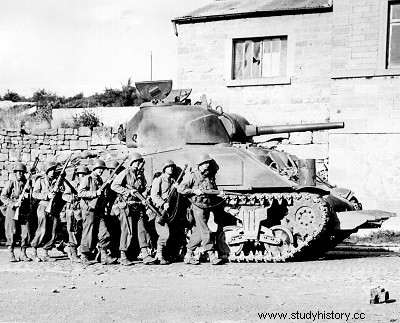
IN his History of the 1st French Army Rhine and Danube, General de Lattre defines the Battle of the Vosges in these terms:
We already know how the Liberation campaign, which began at a rapid pace in the fury of the battalions of Toulon and Marseille, followed by a a real race for the steeple with our American comrades in the ascent of the Rhône and the Saône, was slowed down by the lengthening of our communications and especially by our advance on the forecasts of the initial schedule. Now, at the end of petrol and ammunition, if not out of breath, we come up against the resistance quickly organized by the Germans in front of Belfort. A new phase is beginning, that of the Vosges.
Hard and disappointing phase, where difficulties of all kinds constantly multiply in the bitterness of the uninterrupted fighting and the harshness of a particularly hostile Vosges autumn...
Born from the impatience of to enter Alsace and the hope of being able to enter it without waiting for the necessary means to force the lock of Belfort to be gathered, constantly affected by the slide towards the north, along the Vosges, of the Patch army and, therefore, deprived of its strength each time the courage of our troops finally seems to overcome the extreme stubbornness of the enemy, it is the battle of bad luck.
But it was ultimately the battle that forced fate by creating the vast diversion behind which the victorious Belfort offensive was prepared.
From September 15 to 20, the 2nd C.A. of General de Monsabert came to take his place opposite the Belfort Gap, immediately to the left of General Béthouart's 1st C.A., deployed between the Doubs and the Swiss border and stopped by a continuous line of resistance. General de Lattre's initial intention was to open the way to Upper Alsace, by masking the entrenched camp itself and maneuvering it from both wings.
If this maneuver does not succeed, the 1st C.A. will be ready to act by the corridor between the Doubs and the Swiss border, in the direction of Pont-de-Roide - Delle - Altkirch, the 2nd C.A. preparing to march on Giromagny , the Ballon d'Alsace and the Col de Bussang, either to seize the Rougemont plateau (minimum objective), or to reach the high valleys of the Doller and the Thur and take control of the Cernay region which opens the road to Mulhouse and that to Colmar. The 1st French Army, stretched over a front of more than 360 km, in the Alps, from Barcelonnette to Lake Geneva and, in front of Belfort, from Lomont to Servance, must act offensively on a front of 75 km, but the transport crisis its effects are hard to feel. Due to the destruction, communications with the bases in Provence remain precarious so that no wheel of ammunition and gasoline has yet been constituted in the army depots.
It is therefore necessary to wait until the stocks essential to an action of force have been constituted. This is the precondition for launching the offensive.
This inevitable wait will have serious consequences because, while the operation is preparing at the pace imposed by transport, the slide north of the neighboring American Vile Army will force the French 1st Army, from September 25, to engage the 2nd C.A. entirely on its left and to gradually reinforce it with all available means. It is by this mechanism that the spiral of the battle of the Vosges begins and will develop during the reprieve imposed on the operation of force by the gap of Belfort.
